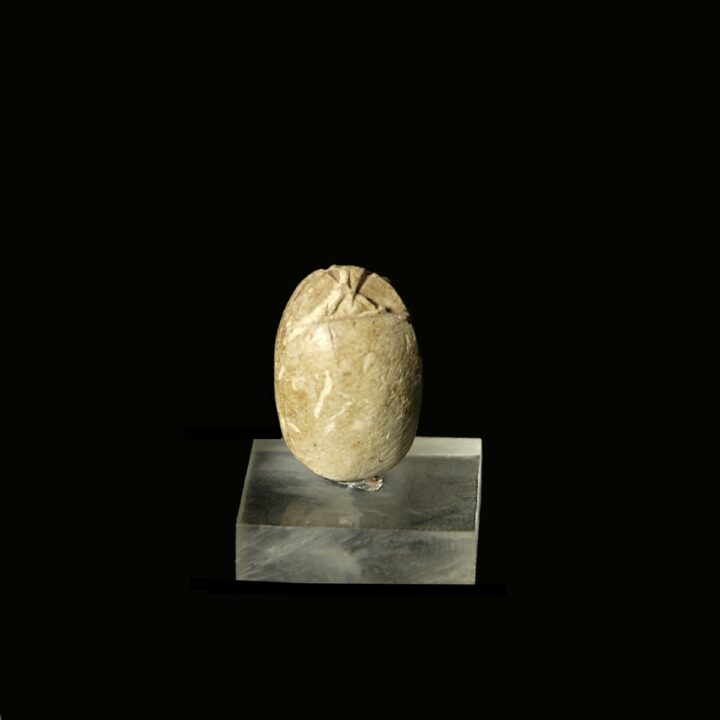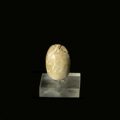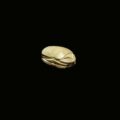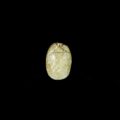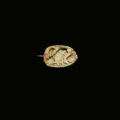Steatite Scarab with Lions and Uraei
Culture: Egyptian/Canaanite
Period: 2nd Intermediate period, Hyksos period, 1648-1550 B.C.
Material: Steatite
Dimensions: 2 cm long
Price: Sold
Ref: 1528
Provenance: Dutch collection V. D. W., Hoofddorp, acquired prior to 1983. Last in the French art market. With a copy of the collection inventory list.
Condition: Intact. In the rear drill hole a pin with traces of glue. Otherwise very beautifully preserved.
Description: Finely worked out steatite scarab, which originates from a Canaanite workshop and dates to the Hyksos period. The upper side is smooth, two small incisions on the sides indicate the wings. The clypeus (head shield) is clearly accentuated, the eyes are lengthwise incised. The front pair of legs is placed in the front under the head, whereby the tips reach to the perforation. The two rear pair of legs are in opposite directions also along the body. Typical for the Hyksos period are the incised wild animals at the bottom, which should probably protect the wearer. In the centre sits a powerful lion to the right on his fore paws. The fur is finely ribbed. He is flanked by two cobras (uraei). The body of the two snakes each with a central groove and dark horizontal ribs. The scarab is pierced lengthwise for suspension. At the rear drill hole a small pin is glued to mount the scarab on an acryl base.



